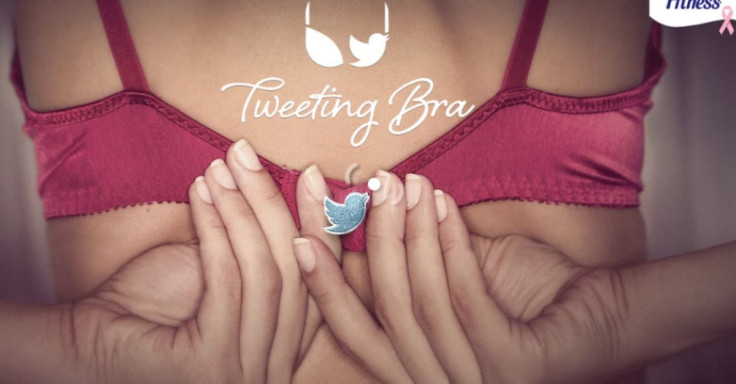'Tweeting Bra’ Reminds Women To Perform Monthly Breast Self-Exams, But Is It Real? [VIDEO]

So, here’s a quick spoiler: you can’t buy a bra that tweets when it’s time for you to perform your monthly breast self-exam. But you can follow the tweeting bra on social media as it sends out reminders every time its owner, Greek television host Maria Bacodimou, unclasps it.
The tweeting bra is part of a Nestle Fitness campaign to raise breast cancer awareness and encourage women to perform breast self-exams. Designed by Ogilvy Athens, the bra has a Bluetooth-enabled clasp that sends a signal to Bacodimou’s cell phone and tells a server to generate a tweet every time it is unhooked.
"Some don’t understand me cause I speak Greek. Instead of learning Greek, learn something easier: how to have a self-exam!" the bra tweets.
The campaign is set to last two weeks.
How To Perform A Self Breast Exam
Outside of mammograms, self breast exams are a great way to identify subtle changes and abnormalities in your breasts. While examining, you use your eyes and hands to observe the appearance and feel or your own breasts every month. That way you will be able to notice if something looks or feels a little different. According to Mayo Clinic, about 40 percent of women with breast cancer say they discovered lumps and suspected something was wrong by examining their breasts themselves.
Breast self-exams have two steps: visual inspection and physical inspection.
For visual inspection, stand in front of a mirror, braless and shirtless. With your arms at your side then raised in the air, look for dimpling, size or shape changes, and whether your breasts are more or less symmetrical. Check to see if your nipples are inverted.
Once you’ve completed the visual inspection, you can move on to the physical inspection. You can perform the inspection while lying down or standing up. Raise your left hand above your head while using your right hand to examine your left breast, then vice versa. Use the pads of your three middle fingers — not the tips — of your three middle fingers to press on different parts of your breast at different pressure levels. Go slowly to take note of any abnormalities.
If you notice any hard lumps, changes in color or size, bulges, nipple discharge, swelling, or pain, be sure to contact your healthcare provider to receive a clinical exam.
Remember: there are only a few days left in Breast Cancer Awareness Month. For details on how you can contribute your time or resources to finding a cure, visit the Susan G. Komen Breast Cancer Foundation.
To view the ad for the tweeting bra, watch below:



























